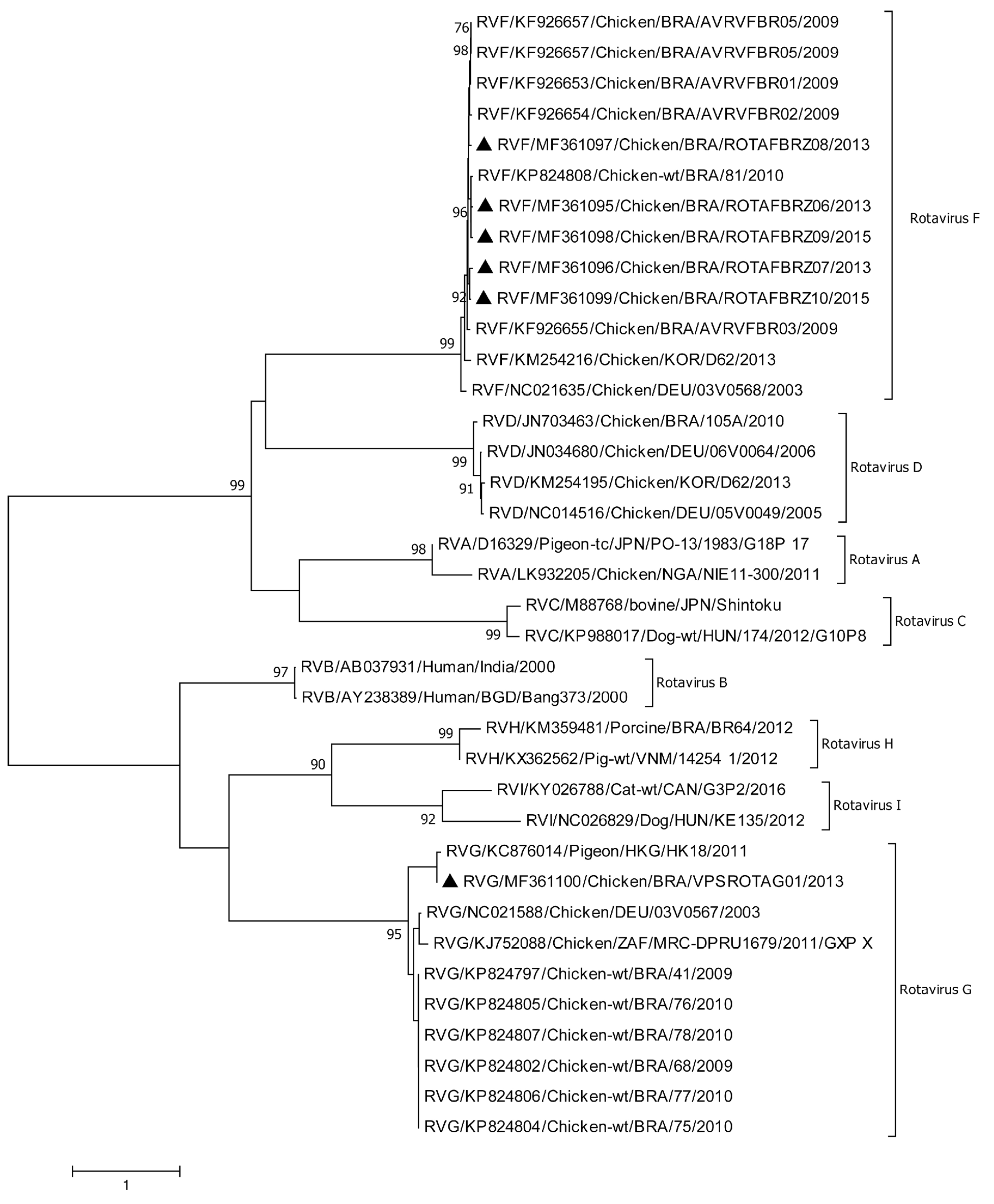Genetic Characterization of Avian Rotavirus Groups F and G in Brazilian Farms
Genetic Characterization of Avian Rotavirus Groups F and G in Brazilian Farms
Ligia Neves Scuarcialupi, Laila Andreia Rodrigues Beserra, Julia Rosas Hochheim, Rodrigo Martins Soares, Fabio Gregori*
Nucleotide neighbor-joining distance tree (maximum composite likelihood substitution model) of the partial VP6 rotavirus gene (615-nt), according to RV groups. Strains detected in this study are preceded by black triangles. The numbers at each node are bootstrap values greater than 70% from 1,000 bootstrap replicates, and the scale bar represents the number of substitutions per site.







